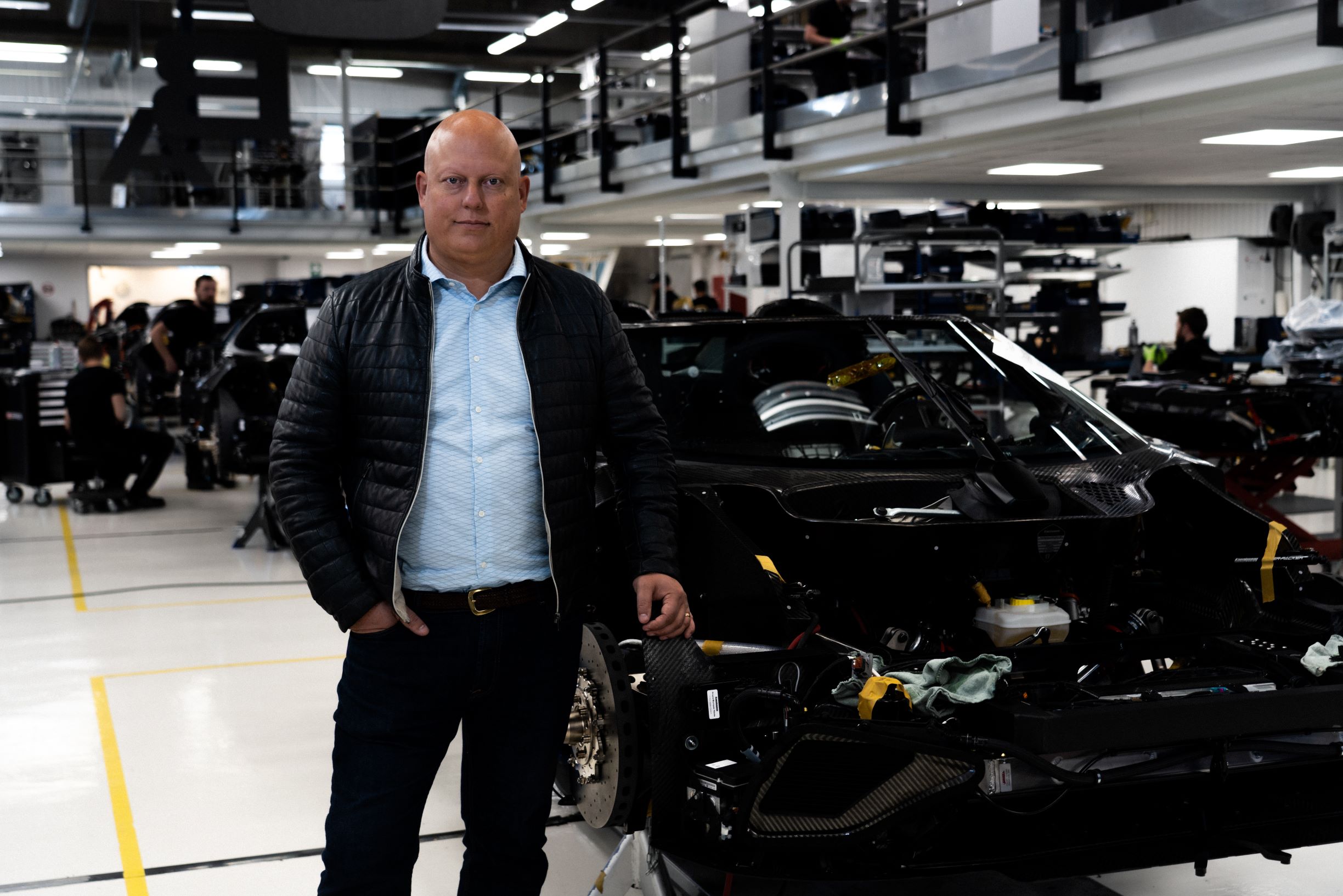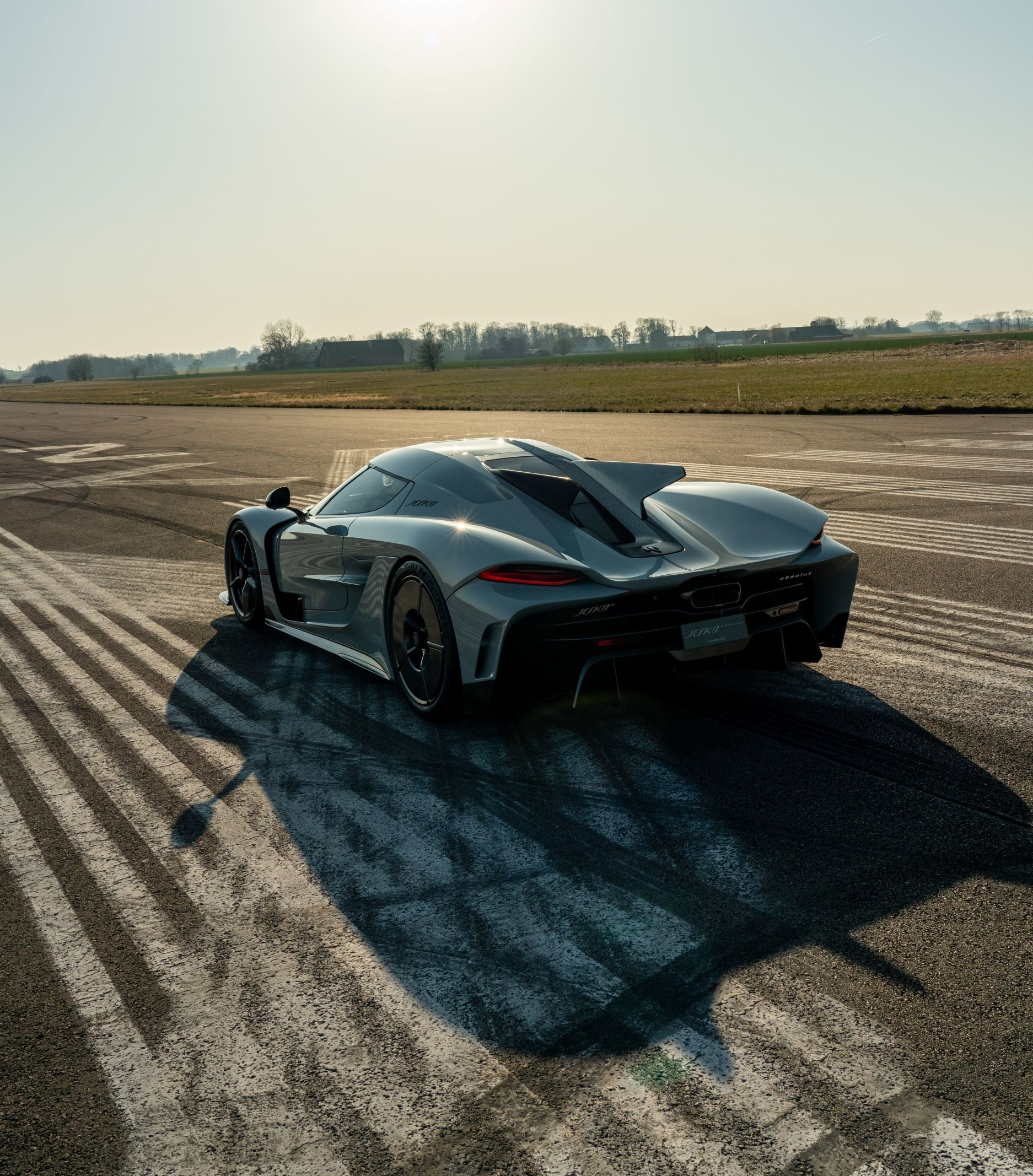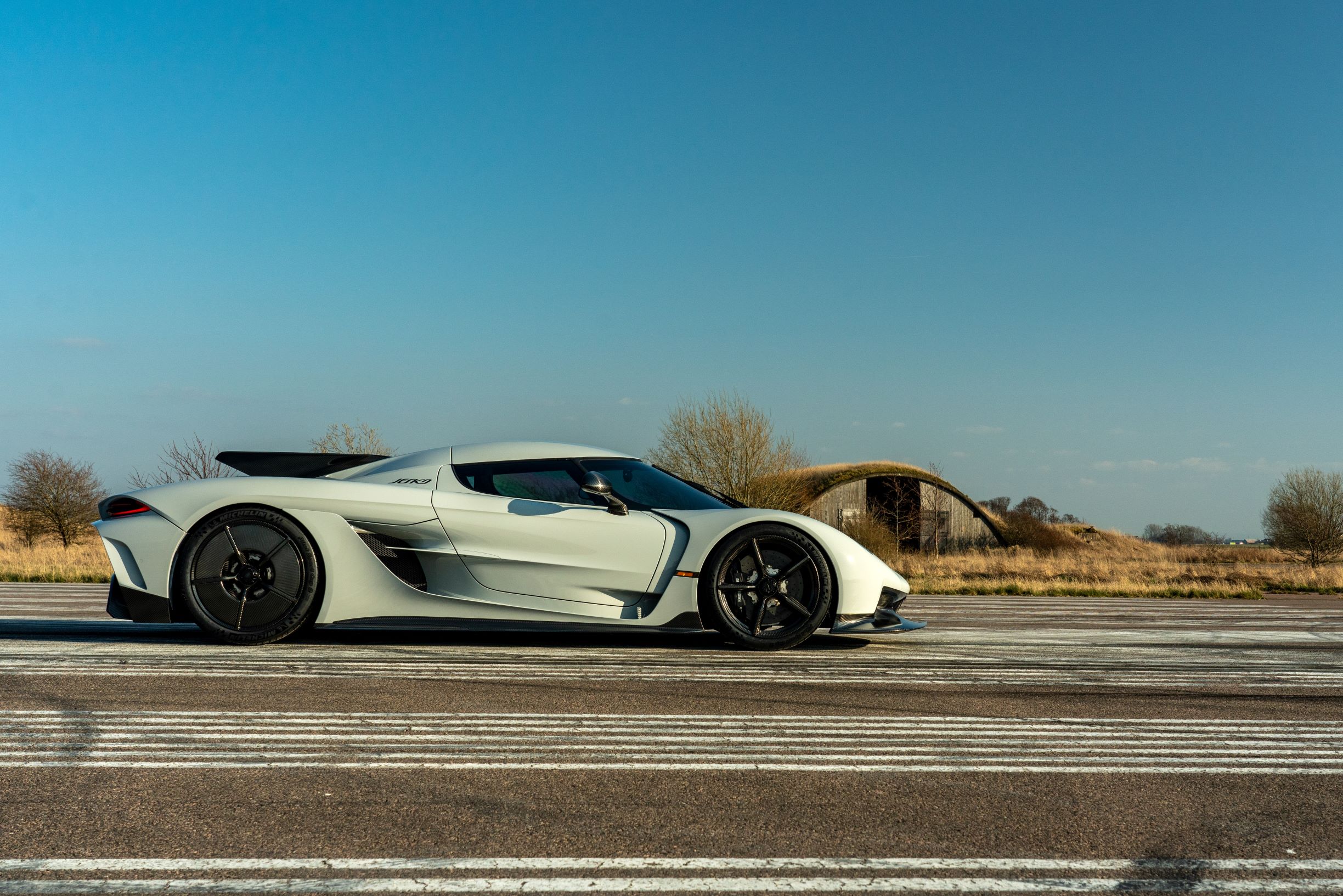How Koenigsegg Became The World’s Finest Producer of Swedish Supercars
Christian von Koenigsegg, Elon Musk and Horatio Pagani are to today’s generation what automotive legends Ettore Bugatti, Ferdinand Porsche and Enzo Ferrari were to the past.

The Koenigsegg story begins, in its purest form, in the rolling hills of a mythical town called Pinchcliffe. At the Pinchcliffe Grand Prix, to be exact—Ivo Caprino’s 1975 stop motion film featuring a bicycle repairman named Theodore Rimspoke and his animal cohorts. In the film, notably the most popular in Norwegian history, Rimspoke conspires to build the fastest car ever made and win his hometown’s GP against a traitorous ex-assistant.
When an impressionable Christian von Koenigsegg first watched it wide-eyed as a child, Rimspoke’s ambition resonated so deeply he turned to his father as they left the cinema and declared that, one day, he too would build the fastest car in the land. “That’s what I’m going to do when I grow up, I told my father,” Christian recalls of that distant afternoon. “I’m going to be that bicycle repairman.”
All kids dream, of course. But Rimspoke, described as “an independent sort of fellow, more of an inventor than a businessman,” parallels Christian in ways too uncanny to ignore. While the fictional Scandinavian craftsman made his name inventing a dual-engined, copper-bodied hotrod dubbed Il Tempo Gigante (with spinning onboard radar, naturally), this thoughtful, determined Scandinavian has also made his name inventing machines of absurd provenance.
“I think it was a combination,” mulls Christian when asked if it was more Rimspoke himself or Il Tempo Gigante that inspired his vision quest. “There was something amazing about putting something on paper, and then you go out and replicate it and manifest it, and then it makes noises and spits fire and beats the establishment,” he continues. “Just everything about it.”

Although he started designing cars when he was five years old, the realization of an actual automotive brand didn’t materialize until the ripe age of 22. After proving his entrepreneurial aptitude in the food wholesaling industry, in 1994 Christian sat at his computer and drew the first lines of what would become the CC concept. Koenigsegg Automotive AB was born on that warm August afternoon, and soon he was contacting experts in chassis manufacturing and composite parts, assembling a small cadre to create the first Koenigsegg prototype.
“It took two years from starting drawing to have something rough to drive,” he recalls. That first CC prototype debuted in the summer of 1996, running exhibition laps at the Swedish DPR race, fittingly at the old Anderstorp Formula One racetrack (sadly, not Pinchcliffe). Amid a field of homologated racecars like McLaren F1s, Jaguar XJ220s and Ferrari F40s, the Swedish debutante was met with as much cockeyed suspicion as fanfare.
But now, less than a quarter century later, the Koenigsegg name is no longer met with doubt—rather it has quickly grown into legend in the famously immolating world of supercar manufacturers. Christian is no longer an outsider, but rather has elevated his surname into the pantheon of 21st century automotive greats, joining the rarefied stratosphere of Elon Musk and Horatio Pagani. The trio are to this millennium what industry goliaths like Ettore Bugatti, Ferdinand Porsche and Enzo Ferrari were to the last.

The foundation for Koenigsegg’s lofty reputation has always been in innovation and engineering. Most famously, its revolutionary carbon fiber monocoque chassis—at the time only seen in the McLaren F1, widely considered the world’s first hypercar. But Koenigsegg’s initial CC prototype did not feature a carbon fiber monocoque, rather it utilized a space-frame tubular chassis instead.
The F1 proved to be a hugely influential vehicle for the young inventor. Surprisingly, it wasn’t from its use of a carbon fiber, however, but rather from McLaren’s big-picture perspective.
“I read, I think it was Car magazine, which had the first silver McLaren prototype on its cover,” Christian recalls. “It was a stunning car which did not come from the established supercar manufacturers, and had a philosophy that was very close to my heart: simplicity, low weight, suspension systems, much more racing-inspired than from say the Italian and German manufacturers. Just on a different level.”
What he remembers of that day first seeing the F1 wasn’t so much joy, but rather… frustration. Resentment at his inaction. “I felt like, Damn. That is what I was supposed to do, and now they’ve gone and done it. I can’t wait any longer. So it really triggered me to start. If I wouldn’t have read that magazine, maybe I would have waited another couple years.”

But he did eventually appropriate the concept of a carbon fiber monocoque, debuting that revolutionary chassis design in his CC8S production prototype at the 2000 Paris Motor Show. Even though the gestation period to produce a marketable vehicle was pronounced (from 1994 to 2002), that developmental era was really the foundational soil from which every Koenigsegg since has grown.
“It’s a very clear lineage back to everything we’re doing,” Christian says. “It’s almost shocking in a way, even to me, how fruitful those ideas were. We’ve only tweaked them and perfected them. We haven’t really changed much—and we’re still competing, today in 2020, with the same philosophy that I came up with almost as a teenager.”
Koenigsegg’s hypercars—or as they prefer to dub them, “megacars”—are an evolution, slowly morphing from model to model, with certain foundational elements core to the brand (e.g. carbon fiber chassis, mid-engine layout, V8 powerplant) acting as its DNA. The $2.2-million Regera, the company’s first hybrid, is 80% new compared to its predecessor the Agera. Take its chassis: the outer dimensions are similar, but the interior monocoque is altered for battery packs, new crash regulations and other considerations. The next two-seater megacar in the company’s lineage, the $2.8-million Jesko, will also offer a completely new, slightly bigger monocoque.
“The One:1 and the Agera RS are the same gene pool, I would say, but the Regera is a completely new creature,” states Christian. “Then the Jesko, again, a completely new creature. That is very much a ground-up car.”
https://www.instagram.com/p/CCvT4U4J3WK
Another major element to Koenigsegg’s singularity is its powerplant: brilliant V8 blocks which have slowly morphed over time, growing from 4.7 to 5.0 liters, and always featuring apex-level engineering. The innovations have proven both prolific and remunerative: the One:1 is the only vehicle in the world to match a horsepower for every kilo of weight, and they have notched countless Guinness World Records for speed, power and acceleration, toppling the Bugattis and Hennesseys of the world.
Koenigsegg is a tiny niche automaker (about 400 employees) throwing haymakers at multibillion-dollar international OEMs, and continuously laying them on that mat. They are the starry-eyed bicycle repairman in the workshop, building dream machines that conquer worlds.
The CC8S was the first vehicle to feature an early version of the 655-hp proprietary Koenigsegg engine. It earned a Guinness World Record for most powerful homologated production car in the world. “To go to 806 horsepower was a huge headache,” Christian recalls in his slight Swedish accent.
“But then when we had our own platform to go from 800- to 900- to 1,000-horsepower. And then onwards and onwards, and now we’re at 1,600 [horses]. It kind of has been an easier path somehow. Because when you know your foundation, the strengths and weaknesses, and you can work on it for years and hone it, tweak it, reinforce and figure it out, it just seems there is no real end to what you can do to an engine of that size.”
https://www.instagram.com/p/CDBVszdpSTC
The decades of powerplant engineering have now peaked, twofold. First with the final evolution of the 5.0-liter twin-turbo V8, fitted in the upcoming Jesko Absolut, which Christian promises will be the fastest Koenigsegg that will ever be built. The Absolut will mark the end of a lineage, the Apex Internal Combustion Engine, coursing with over 1,600 horses (on E85 biofuel) and boasting a ludicrous 300 mph top speed. Post-Jesko, the Swedes are pivoting to a hybrid powertrain built around a groundbreaking engine, amicably dubbed the Tiny Friendly Giant (TFG).
This TFG is designed to be the most intelligent, most advanced, and most efficient petroleum-powered engine the world has ever seen. Envisioned specifically to make the upcoming $1.7-million Gemera even plausible (see our story here), the minuscule 2.0-liter/3-cylinder engine utilizes innovative cam-less architecture and valve technology to somehow generate a mind-boggling 600 horsepower. Let that sink in for a moment: 600 horses, out of three cylinders.
With so much already accomplished, it almost defies logic that Koenigsegg—both man and machine—are somehow only just hitting their stride. When that is mentioned to Christian, he chuckles lightly.
“It’s funny you say that, because after 26 years, the company still very much feels like we’re in some kind of startup mode,” he says wistfully. “Now we’ve been growing organically, so it’s been really step-by-step to safeguard the company not to stumble, and soon we will grow big. But it’s interesting from that perspective, and I’m only 47. So yeah, I’m growing old together with the company.”
Foundations in Carbon Fiber
https://www.instagram.com/p/CDThUmDnU0l
The development of the carbon fiber monocoque is figuratively and literally the foundation of
Koenigsegg. The bones of the entire brand. And whereas many other hypercar manufacturers
are just beginning to work with the costly Formula One material, with the Jesko and Gemera
Koenigsegg is now moving onto its fourth and fifth generation monocoque.
While on the Gumball Rally back in 2015 we stopped at Koenigsegg’s HQ in Ängelholm. There
Christian gave us a tour of his carbon fiber autoclaves, showing where they pressure-bake the
epoxy resin prepreg at extremely high temperatures. This is where the magic happens, as they
say — where engineers drive carbon fiber technology to the bleeding edge. Innovations from
Formula One are also implemented, such as integrating thin aluminum honeycomb structures
between the layers of carbon fiber.
https://www.instagram.com/p/CAm6dClHTvz
“We use the latest and greatest in carbon fiber technology,” Christian was quick to point out.
This aluminum honeycomb technology adds some minor weight, but those grams are greatly
outperformed by the next-level material’s crash resistance. Carbon fiber is highly resilient to a
point, but once the survival cell breaks it shatters — obviously a problem when you’re dealing
with vehicles racing at speeds north of 200-mph. “If you do end up in a situation where you
n actually crunch the monocoque — which is a really severe crash, way beyond normal crash
testing — then the aluminium honeycomb comes into play and absorbs energy, holds things
together.
“
“More of these modern run-of-the-mill hypercars or supercars with carbon monocoques, they
usually don’t have [the honeycomb layer] because it’s too laborsome and too expensive to produce,” Christian explains. “But our cars have always been in a bit of the higher price range,
so we can afford to put it in. It’s that final added layer of security if you’re in a really horrific
situation.”
